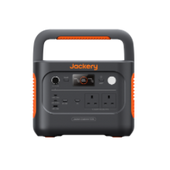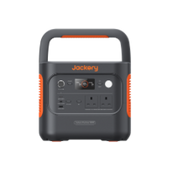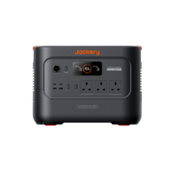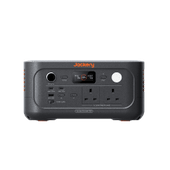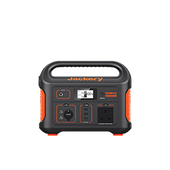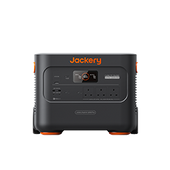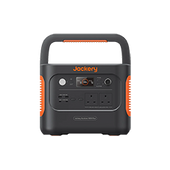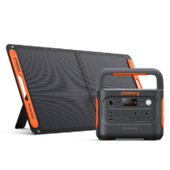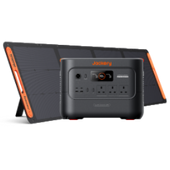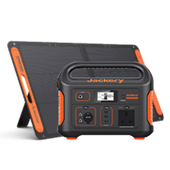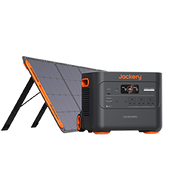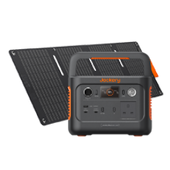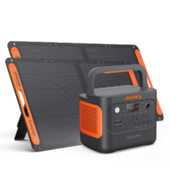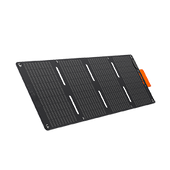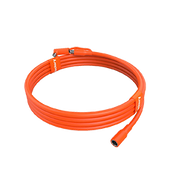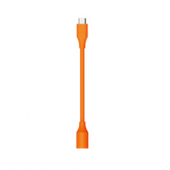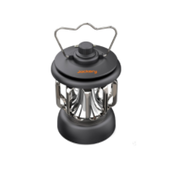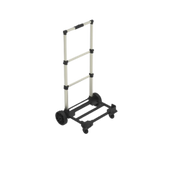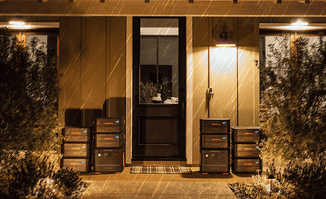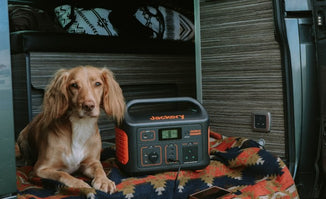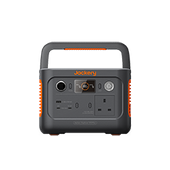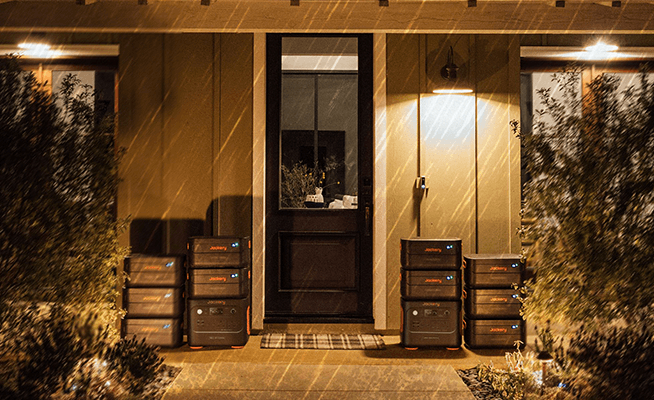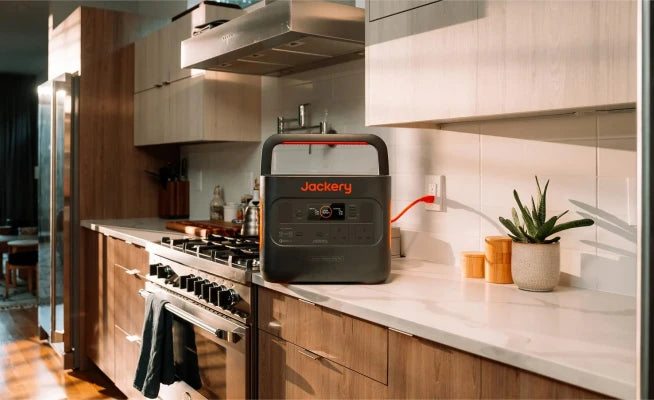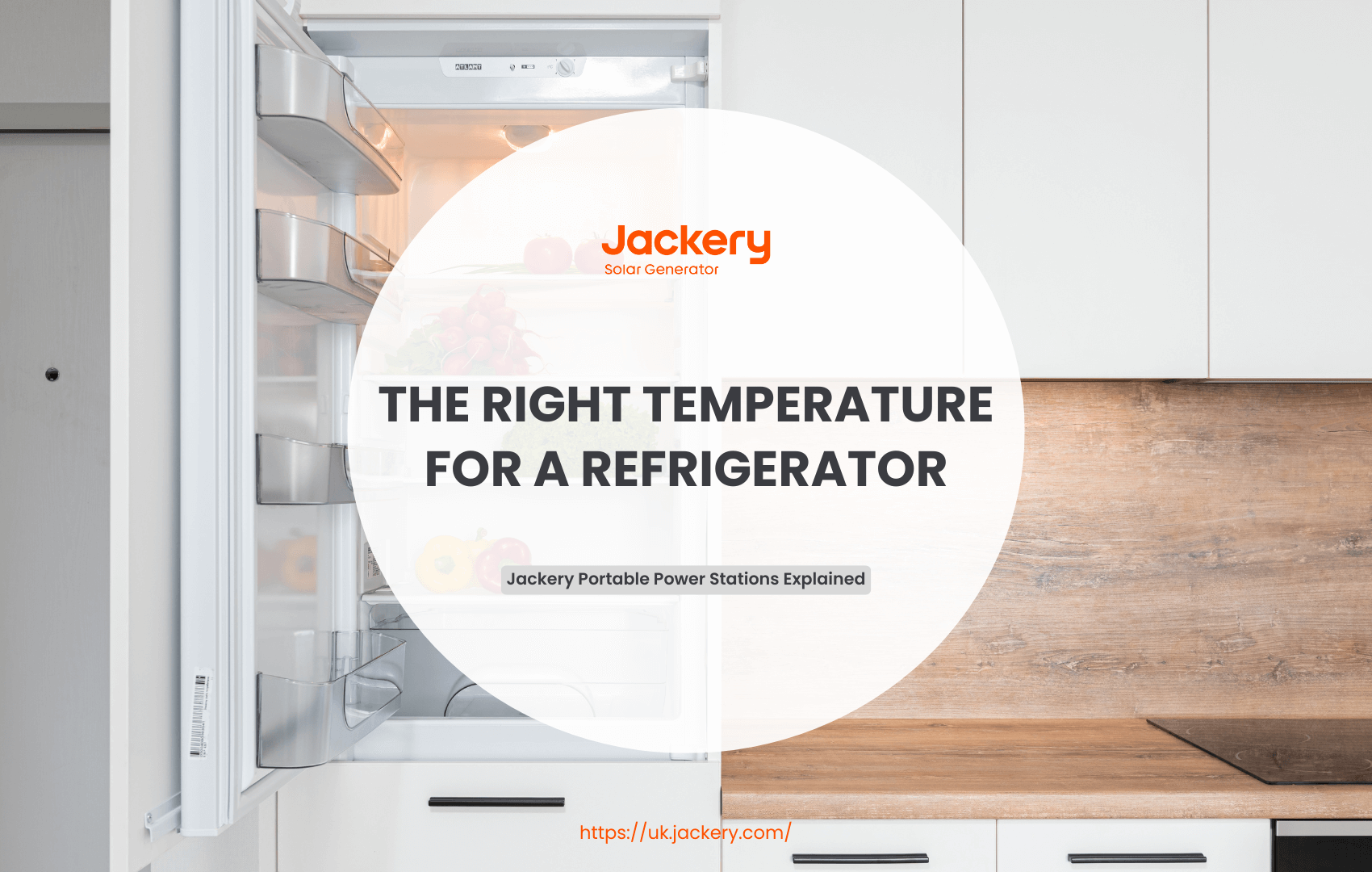Have you ever wondered how many kilowatt-hours of electricity your home consumes per day? How many kWh per day is normal? What factors influence this? In recent years, electricity consumption has become a significant concern for UK households. At the same time, this concern is accompanied by a growing awareness of the environmental impact of energy use. Consequently, an increasing number of households are seeking ways to conserve energy by understanding their electricity usage.
In this blog, we'll explore what is considered a normal amount of kWh per day and how to understand it. We'll also cover high-energy-consuming appliances, factors that influence household electricity consumption, and practical strategies for reducing kWh usage per day.
|
Key Takeaways: |
|
What Is the Average Household Electricity Consumption in the UK?
Have you ever wondered how much electricity the average UK household uses? Knowing the average UK household electricity consumption not only helps you understand the current average electricity bill for UK households, but also helps you assess whether your own electricity consumption is too high. Ofgem, the UK energy regulator, manages average energy usage data.
Ofgem works with industry bodies to review and update the Typical Household Electricity Consumption Value (TDCV) every two years. This ensures that the data reflects current energy consumption trends and changes driven by technological advancements and lifestyle shifts.
The average UK household electricity consumption is based on the electricity consumption of a medium-sized house. Therefore, according to Ofgem's TDCV data, the average UK household consumes approximately 2,700 kWh of electricity per year.
Average Electricity Consumption by Household Size
The larger the household size, the more electricity it is likely to use. Larger households often mean more people, requiring more energy for heating, cooking, lighting, laundry, and entertainment.
For example, a small household of one or two people may use less than the average, around 1,800 kWh per year, primarily for basic needs like lighting, appliances, and heating. Larger households with five or more people may use around 4,100 kWh per year, mainly due to the need for heating, hot water, and appliances in more rooms.
The following table shares annual electricity consumption for households of different sizes:
|
Household Size |
Annual Electricity Usage |
|
1–2 people (low use) |
Around 1,800 kWh |
|
3–4 people (medium use) |
Around 2,700 kWh |
|
5+ people (high use) |
Around 4,100 kWh |
(Data Source: Ofgem)
Average Electricity Consumption Provided by Different Government Agencies
Ofgem, the UK's energy regulator, handles average energy usage data, but other agencies collect and study residential energy usage. As a result, the average power consumption of UK households varies according to the data source used.
The following table represents the average electricity usage for UK households, as reported by three different government agencies:
|
Government Department |
Average annual electricity usage |
Source |
|
Ofgem |
2,700 kWh |
|
|
BEIS |
3,100 kWh |
|
|
Department for Energy Security & Net Zero |
3,400 kWh |
How Many kWh Per Day Is Normal?
For the average household, daily electricity consumption is influenced by several factors, including household size, seasonal variations, lifestyle habits, and energy policies. Therefore, different households use a variety of amounts. So, how many kWh per day is normal?
The average UK household has two to three residents, and according to data from the Office of Gas and Electricity Markets (Ofgem), average daily electricity consumption is approximately 7.5 kWh.
However, this is just an estimate, and individual household usage can vary. In addition to household size, electricity consumption varies by season. For example, winter typically requires more electricity for heating and lighting. Therefore, a daily electricity consumption of 8-10 kWh is typical for most households.

However, this is just a guideline, and it doesn't mean you should stick to this number without further analysis of your own home. If you have energy-intensive devices in your home, your electricity consumption may be higher.
The following are average daily electricity consumption ranges based on the number of residents and the size of your home (for reference only):
|
House Size |
Average Daily Electricity Consumption Range |
|
1-2 bedroom apartment |
4-6 kWh |
|
3-bedroom house |
8-12 kWh |
|
4-bedroom house |
12-16 kWh |
|
5+ bedroom house |
16+ kWh |
Is Using 10 kWh of Electricity Per Day Normal?
Yes, 10 kWh per day is normal for a UK household. The average UK household typically uses between 8 and 10 kWh of electricity per day. Ten kilowatts of electricity is generally enough to meet the needs of an average household and power various appliances and devices for several hours, including lights, refrigerators, computers, TVs, and some small household appliances.
Is Using 20 kWh of Electricity Per Day Normal?
No, 20 kWh per day is typically regarded as excessive for the average UK household. While this may be the norm for larger homes with electric heaters, most households use far less. For example, the average UK household uses about 8-10 kWh per day for lighting, heating, cooling, cooking, and other domestic equipment. 20 kWh per day is a high amount for the average household, accounting for approximately 100% of the average.
How to Know How Many kWh Per Day?
Calculating your household's daily electricity use is easier than you might believe. To precisely calculate how many kWh per day, you can use the following methods:

Method 1: Check Your Electricity Bill
Most energy companies include a monthly total electricity usage (kWh) on their bill. Dividing it by the number of days in the month yields an estimate of average daily usage. For example, dividing your monthly total electricity usage by 30 yields an estimate of your daily consumption. While convenient, this method does not provide specific daily usage data; it merely shows average usage. This strategy is often better suited for consumers who do not require real-time control.
Method 2: Track Appliance Usage
To calculate an appliance's electricity consumption, multiply its rated power (measured in watts and usually specified on the appliance or in the user manual) by the number of hours used each day. Then, multiply the power rating by the number of hours used and divide by 1,000 to get how many kilowatt-hours each appliance used.
For example, a 1,500W air conditioner running for four hours every day consumes 6kWh (1,500W * 4h / 1,000). Human assessment may result in mistakes, such as overlooking standby power use or changes in actual power consumption. As a result, this method is more suited to situations requiring precise optimisation of individual appliance use.
Method 3: Using Monitoring Devices
Smart plugs and energy monitors can track the energy consumption of specific appliances or the entire home in real time. For example, installing a smart outlet for a single appliance allows you to track its particular energy consumption. The app will show the energy consumption of the associated appliance in real-time. While this method produces precise data, it necessitates the acquisition of hardware and has a significant upfront cost. This strategy is better suited for households with high energy management needs and a desire for smart living.
Which Appliances Consume the Most Electricity?
In ordinary living, some appliances consume dangerously large amounts of electricity, considerably influencing how many kWh are consumed each day. The power utilised and the time spent using household equipment determine their power consumption ranking. Below are some of the most energy-intensive appliances:

HVAC System
For homes that rely on electricity, heating, ventilation, and air conditioning systems are the largest consumers of electricity. HVAC systems significantly impact daily electricity consumption, especially in homes that are poorly insulated. Heating can account for up to 27% of your electricity bill.
Washers and Dryers
Washers and dryers are substantial energy consumers, especially in larger homes. A washing machine can consume up to 166 kWh per year. Each wash cycle can consume between 0.5 and 1 kWh, depending on the spin cycle, temperature, load, and energy efficiency rating. The average electric dryer cycle consumes 2-3 kWh, placing it among the most energy-intensive appliances in the home. Assuming your tumble dryer is used 150 times a year, it could consume 394 kWh.
Electric Water Heaters
Electric water heaters inevitably consume a lot of electricity when washing clothes, showering, bathing, and washing dishes. They typically draw around 1500-3000W and heat quickly, but heating water from cold to hot requires a significant amount of energy.
Freezers or Refrigerators
Refrigeration equipment must be constantly running, making it invisible and a constant energy consumer. The more often the refrigerator or freezer door is opened, the more difficult it is to restore the ideal temperature, and thus the more electricity they consume.
Dishwashers
Modern dishwashers use substantially less energy than older models, yet their electrical consumption remains significant. Furthermore, the hot water cycle uses more electricity than the cold water cycle.
Here's an overview of the 24-hour electricity consumption of common household appliances:
|
Appliance Type |
Appliance |
Power Consumption |
|
Heating and Cooling Equipment |
Electric heater |
2-3 kWh |
|
Furnace (electric) |
10-20 kWh |
|
|
Air conditioner |
3-5 kWh |
|
|
Kitchen Appliances |
Refrigerator |
1-2 kWh |
|
Microwave |
0.5-1 kWh |
|
|
Oven |
2-3 kWh |
|
|
Coffee maker |
0.5 kWh |
|
|
Toaster |
0.1-0.2 kWh |
|
|
Laundry Equipment |
Washing machine |
0.5-1 kWh per load |
|
Tumble dryer |
2-3 kWh per load |
|
|
Lighting Equipment |
LED light bulbs |
0.05 kWh per bulb |
|
Incandescent bulbs |
0.5 kWh per bulb |
|
|
Table lamp |
0.1 kWh |
|
|
Living and Entertainment Equipment |
TV |
0.2-0.5 kWh |
|
Desktop computer |
0.5-1 kWh |
|
|
Water heater |
3-5 kWh |
|
|
Iron |
1 kWh |
|
|
Electric fan |
0.5 kWh |
The above data is for reference only. Due to differences in brand, power, etc., the power consumption of electrical appliances may vary.
What Factors Affect kWh Usage Per Day?
Electricity consumption in UK homes is not constant; it fluctuates depending on several factors. Understanding the elements that impact how many kWh per day a home consumes might help you better manage your energy usage.

Factor 1: Home Size
The size of your home has a significant impact on how much electricity you use. Larger homes use more electricity because they need more lighting, heating, and cooling. Larger homes also include more appliances and electronics, resulting in higher overall energy consumption.
Factor 2: Number of Residents
The more people living in a home, the higher the energy consumption. Each additional person increases the frequency of appliance use, hot water consumption, and overall energy demand. Simply put, more people mean more laundry, dishes, showers, hand washing, TV, lights, and so on, all resulting in more electricity consumption.
Factor 3: Appliance and Appliance Efficiency
The efficiency of your appliances can significantly impact energy consumption. Older appliances typically consume considerably more electricity than modern ones. For example, a 15-year-old refrigerator may use twice as much energy as a modern, energy-efficient refrigerator.
Factor 4: Heating Methods
Heating UK homes in winter requires a significant amount of energy, especially in homes that rely on electric radiators, underfloor heating, or storage heaters. Households using electric heating instead of gas will see significantly higher electricity consumption, especially in winter.
Factor 5: Lifestyle and Habits
Daily habits, such as how long lights and screens are on and whether devices are unplugged, can affect electricity consumption. For example, if a family member works from home, they tend to use more electricity for computers, monitors, and lighting.
Strategies for Reducing kWh Usage Per Day
Now that you know how your power use compares to the average, which appliances contribute the most to your usage, and the factors that influence your electricity consumption, you may seek strategies to reduce wasteful electricity consumption in your house.

Strategy 1: Switch to LED Lighting
Most of the electricity consumed by standard incandescent light bulbs is converted into heat rather than light, resulting in high energy consumption. Replacing older incandescent or halogen bulbs with modern LED bulbs can reduce your lighting electricity usage by up to 80%. If you haven't already done so, you should purchase and install LED bulbs throughout your home.
Strategy 2: Use Eco Mode on Appliances
Switching conventional household equipment to energy-saving mode reduces power consumption and electricity usage. For example, modern washing machines and dishwashers have an "Eco" setting. In Eco mode, the cleaning cycle is extended, but the appliance's energy consumption is significantly reduced without sacrificing performance.
Strategy 3: Reduce the Use of Energy-Intensive Appliances or Devices
Cleaning appliances are typically the most energy-intensive appliances in your home, primarily due to the energy required to heat water or air. For example, tumble dryers are one of the biggest energy consumers in UK homes, so try to dry your laundry on a clothesline or drying rack whenever possible.
Strategy 4: Invest in Home Insulation
A well-insulated home can significantly cut your electricity consumption, especially if you use electric heating. Insulating the loft, walls, and floors is one way to improve the insulation of your home. Installing double glazing and filling gaps in windows and doors can also significantly improve your home's insulation.
Strategy 5: Switch to Solar Energy
The simplest method to get started with solar energy is to install solar panels and create your own renewable electricity. A more cost-effective and convenient alternative is to purchase a portable solar power station. Portable stations, such as the Jackery Explorer 2000 Plus or 1000 Plus, not only charge your batteries with solar power, minimising your reliance on grid electricity, but also provide backup power during outages.
How Jackery Portable Power Stations Help Save Electric Bills
Portable power stations, such as those from Jackery, can be a valuable tool for reducing electric bills, but their effectiveness depends heavily on how they are used. Simply charging a portable power station with grid electricity and then using it won't necessarily lead to significant savings, as there are efficiency losses in the process. The real key to saving money is pairing the power station with a renewable energy source, most notably solar power.
The most significant way to save money is by using portable solar panels (like Jackery Solar Panels) to charge your power station. The electricity generated from the sun is free, so by using it to power your devices, you reduce your reliance on the grid and cut your utility bill.
Many utility companies have "time-of-use" or "peak/off-peak" electricity rates. This means the cost of electricity is much higher during certain times of the day (e.g., late afternoon and early evening) and much lower during others (e.g., overnight).
In the event of a power outage, a portable power station can be a quiet, fume-free, and safe alternative to a gas generator. This eliminates the need to buy and store fuel, which can be costly. Here, we recommend the Jackery Explorer 1000 Plus and 2000 Plus.
Jackery Explorer 2000 Plus
Choosing the Jackery Explorer 2000 Plus to save on your electric bill is about investing in a system with superior capacity, scalability, and long-term performance. While a smaller model might save a few dollars, the 2000 Plus is designed to be a more substantial home energy management solution.

Unmatched Expandable Capacity: This is the most significant differentiator. The Explorer 2000 Plus starts with a robust 2,042Wh capacity, but it can be expanded by adding up to five Jackery Battery Pack 2000 Plus units. This allows you to scale the system's capacity from 2kWh up to a massive 12kWh. You can charge the entire system during off-peak, low-cost hours (e.g., overnight) and then use that stored power to run major household appliances (refrigerator, HVAC, electric oven, etc.) during expensive on-peak hours. The larger the capacity, the more of your home's energy consumption you can shift, leading to more substantial savings.
High Power Output for Heavy-Duty Appliances: The Explorer 2000 Plus delivers a continuous output of 3,000W and a 6,000W surge peak. This high output is essential for running power-hungry appliances that are often a significant source of energy consumption. Unlike smaller power stations that are limited to charging small electronics, the 2000 Plus can handle devices like a window air conditioner, a full-size refrigerator, or a water pump. By running these appliances on your battery, you can directly cut down on the parts of your bill that have the highest cost per kilowatt-hour.
Rapid and Efficient Charging: The 2000 Plus can be fully charged from a wall outlet in just two hours. This is crucial for "peak shifting" strategies, as it allows you to top off the battery during a short off-peak window quickly. Besides, it supports a high solar input of up to 1,400W, enabling it to be fully charged by Jackery Solar Panels in as little as two hours under ideal conditions. This fast charging means you can maximise the amount of free solar energy you capture, even with limited sunlight hours.
Long-Term Durability and Reliability: The Jackery Explorer 2000 Plus uses a LiFePO4 (Lithium Iron Phosphate) battery, which has a significantly longer lifespan than traditional lithium-ion batteries. It is rated for over 4,000 charge cycles to 70% capacity, which can translate to over a decade of daily use.
|
Appliances |
Running Time |
|
Electric Kettle (850W) |
1.9H |
|
Portable AC (1150W) |
1.4H |
|
Electric Oven (800W) |
2H |
|
Refrigerator (200W) |
7.7H |
|
Wi-Fi Router (10W) |
59.8H |
(The running time is provided for reference only; the actual time may vary depending on your usage and usage patterns.)
Jackery Explorer 1000 Plus
Choosing the Jackery Explorer 1000 Plus to save on your electric bill is a practical and strategic move, especially for those with moderate energy needs who want the flexibility of a portable power station. While the larger models (such as the 2000 Plus) offer more raw power, the 1000 Plus strikes an excellent balance of capacity, output, and portability, making it a wise investment for various cost-saving scenarios.

Sufficient Capacity: With its 1,264Wh capacity, the 1000 Plus has enough stored energy to run essential and high-draw appliances during a day's peak hours. This is the core of "time-of-use (TOU) rate arbitrage." You can charge the unit overnight when electricity rates are at their lowest, then power devices like a refrigerator, a television, or a microwave during the expensive daytime hours. This practice directly reduces the amount of power you draw from the grid when it's most costly.
High Power Output: The unit boasts a 2,000W continuous output and a 4,000W surge peak. This is a significant amount of power for a unit of its size, allowing you to run up to 99% of everyday home appliances, from a small portable AC unit to a coffee maker.
Expandable Battery: The Jackery Explorer 1000 Plus can be expanded by adding up to three additional Jackery Battery Pack 1000 Plus units. This allows you to increase the total capacity from 1.26kWh to a substantial 5kWh.
Future-Proofing Your Investment: This scalability is crucial for saving money in the long run. If your energy needs grow, you don't need to buy a whole new power station. You can purchase an expansion battery, which is a more cost-effective way to get more capacity. It allows you to start with a more affordable unit and expand as your savings or energy demands increase.
Free Energy Generation: This high-speed charging means you can generate and store a significant amount of free electricity in a single day, directly offsetting your grid consumption and providing genuine savings. The use of MPPT (Maximum Power Point Tracking) technology ensures the solar charging is highly efficient, maximising the power you get from your panels.
|
Appliances |
Running Time |
|
Electric Kettle (850W) |
1.2H |
|
Blower (700W) |
1.4H |
|
Electric Oven (800W) |
1.3H |
|
Refrigerator (200W) |
4.7H |
|
Wi-Fi Router (10W) |
36.9H |
(The running time is provided for reference only; the actual time may vary depending on your usage and usage patterns.)
FAQs
The following are the frequently asked questions about how many kWh per day is normal.
1. How many kWh per day is normal in the UK?
The average daily electricity consumption for a typical UK household is between 8 and 10 kWh. However, actual household usage varies depending on factors such as household size, home insulation, appliance usage, and lifestyle.
2. How many kWh should I be using daily?
For most average UK households, a daily electricity consumption of 8-10 kWh is normal. This is usually enough to meet the electricity needs of an average household and power various appliances and devices for several hours, including lights, refrigerators, computers, TVs, and some small household appliances.
3. Is 20 kWh a day a lot in the UK?
Yes, 20 kWh a day is generally considered high for the average UK household. However, for larger homes or those using electric heaters, 20 kWh a day may be normal.
4. Is it normal to use 100 kWh per day?
No, 100 kWh a day is not typical for the average UK household. Most families use substantially less electricity, averaging 8 to 10 kWh per day. A daily usage of 100 kWh is much greater than typical. It could be attributed to factors such as charging an electric car, using a high-energy heating system, or experiencing an appliance failure. If you realise your daily usage is approaching 100 kWh, contact your energy supplier for assistance.
Final Thoughts
Understanding how many kWh per day is normal helps you better control your home's energy consumption without significantly altering your lifestyle. Most families consume between 8 and 10 kWh every day, which is considered normal. If your daily consumption falls within this range, you don't need to worry about using too much electricity.
For households that spend more than this, you can reduce your daily kWh usage by switching to LED lighting, using eco-mode on appliances, limiting the use of high-energy equipment, investing in home insulation, and installing solar panels.



